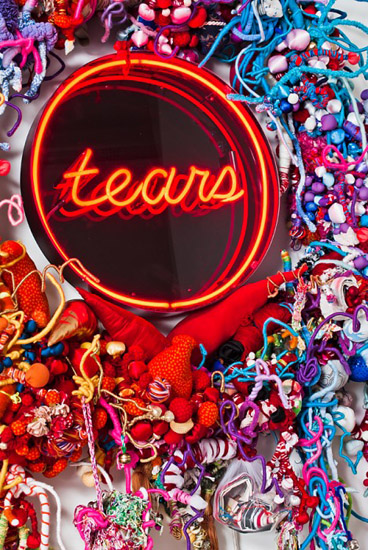From Andrew Frost…
Writing in the catalogue essay that accompanies Hiromi Tango’s exhibition Promised, consulting psychiatrist Dr. Patricia Jungfer argues that “…art has the capacity to change self orientation in the artist and the viewer” and that “…inevitably in the creation of art the artist will interact with their internalised objects, the external manifestation of these objects becomes realised in the art form.” If that is the case then the question becomes how one interprets Tango’s installation – a tangle of cords and cables, fabrics and neons that have been sewn and woven together to create an intense and frankly bizarre agglomeration of stuff that looks like it might just be alive.
Jungfer’s reading of Tango’s work is that the pieces are an embodiment of the idea of connections – literal connections in that the works are intensely compacted and detailed, but also metaphoric connections, in that the works are analogues of neural connection, and thus of memory itself and repressed mental states that find form in the installations. Perhaps this is true for the artist – but what of the viewer? It’s uncertain whether the work ‘changes self orientation’ in the viewer, but one thing for certain, the effect of looking at Tango’s work is rare and unusual.
Until May 31
Sullivan & Strumpf, Zetland
Pic: Tango Hiromi, Tears (detail), 2014. Mixed media, various dimensions.

